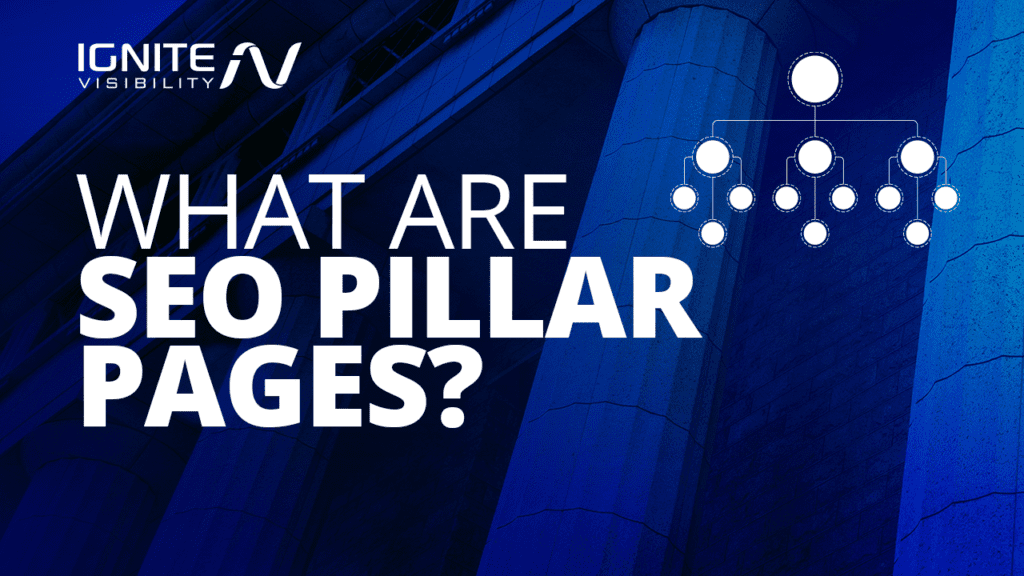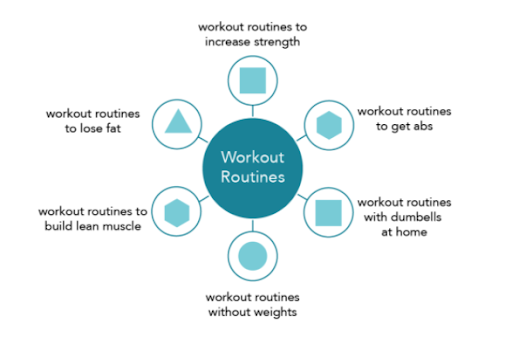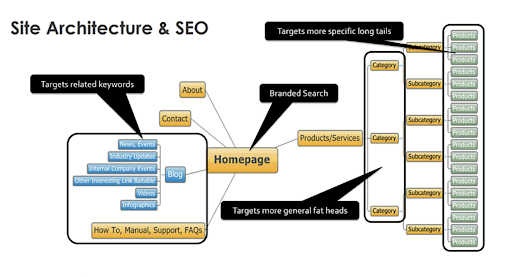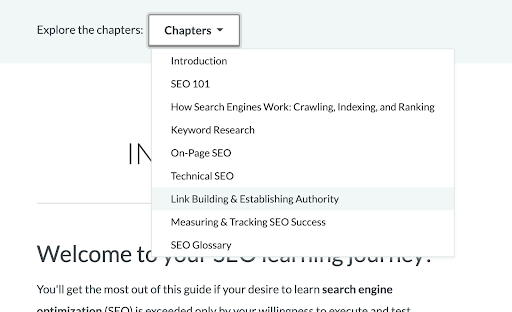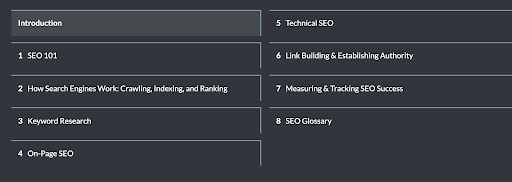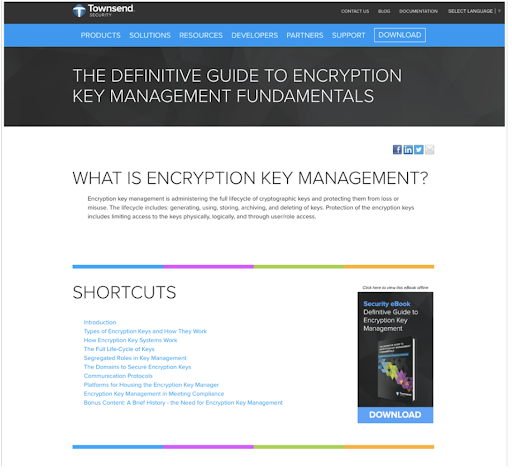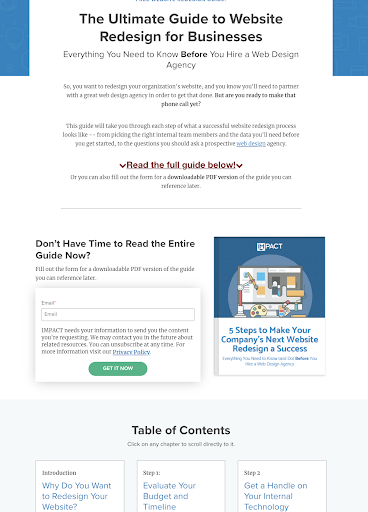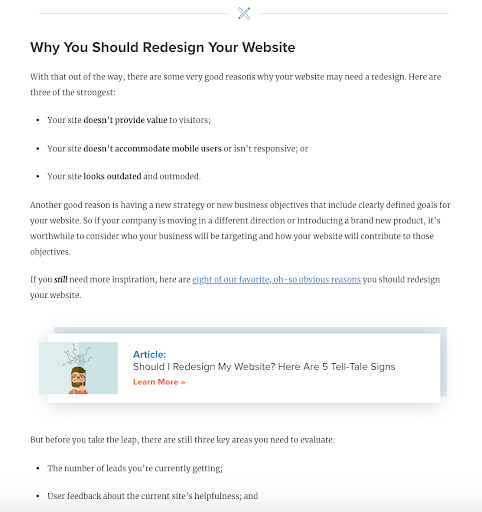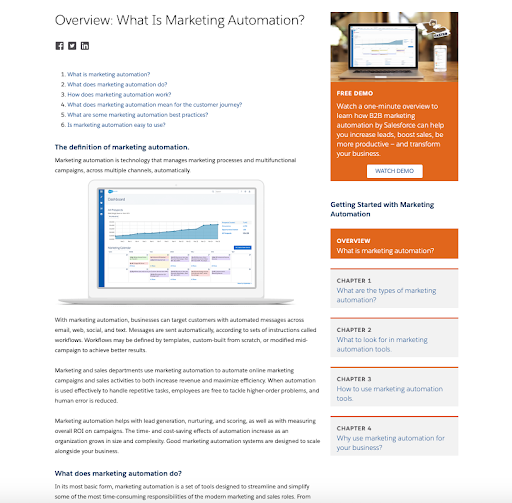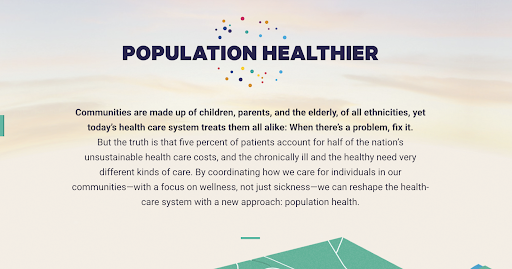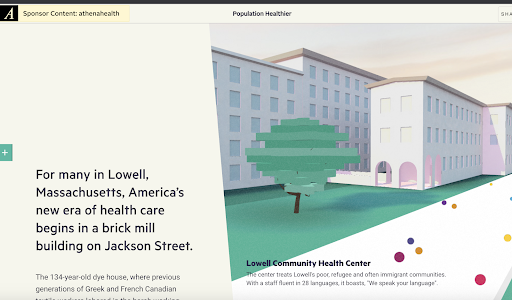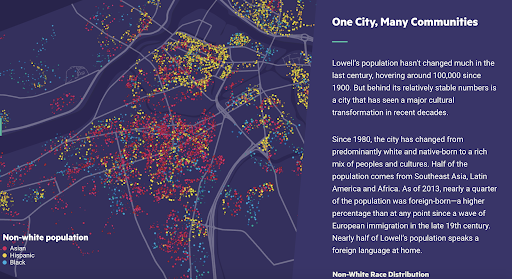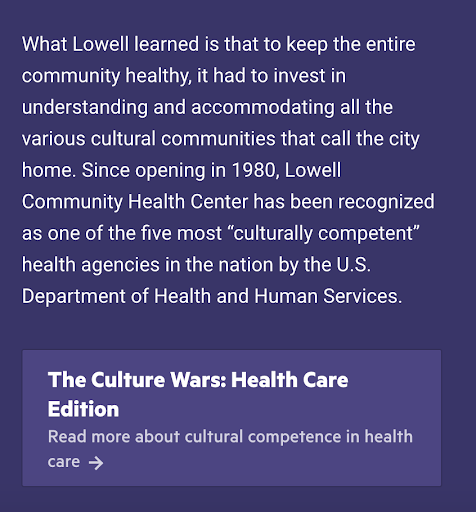Historically, most blogs have been structured around a set of target keywords.
While that’s long been standard practice, the result is often disorganized, as it doesn’t consider the big-picture content strategy–nor, more importantly, the user experience.
We cover what SEO pillar pages are and how to develop a strong pillar page content strategy.
What You’ll Learn:
- What are pillar pages and why should you use them?
- How do pillar pages affect SEO?
- How to create a pillar page
- Great examples to help guide you
What is a Pillar Page?
Pillar pages are part of a strategy called topic clustering, which is a method that uses a central “pillar” as the main content hub for a particular topic.
Typically, those topic clusters represent the broad categories you cover in your blog content. For example, the Ignite blog might include clusters around PPC, social media, email marketing, and SEO.
The pillar page itself is longer than your average blog post but more general. It summarizes key topics and answers common questions, linking to “cluster content,” for more detailed information. That said, the longer the post, the more opportunities you’ll have to link to relevant sub-topics, and by extension, the more opportunities you’ll have to rank for that topic–assuming you’re creating high-quality content.
As an example, if I’m creating pillar content for the Ignite blog, I might create an SEO guide that introduces the topic, then lays out the “basics” like content marketing, intent, etc.
That page might then link to articles, known as cluster content, that digs into more specialized subtopics.
So, that main page might link out to articles covering keyword research, featured snippets, identifying content gaps, and anything else under that broader SEO umbrella.
Here’s an example that illustrates the basic concept of the pillar page.
You have “workout routines” at the center of this topic cluster, with related subtopics that cover a specific topic within that broad category like strength training, fat loss, etc.
Why Should You Use Pillar Pages?
The most compelling case for pillar pages is that they improve the user experience for your website visitors by allowing you to:
- Organize your content around the most important topics
- Improve internal navigation by linking content together in a systematic way
- Provide a clear direction for your content strategy
- Eliminate content gaps and redundant content
Pillar pages might also be used to drive conversions.
While these resources should always be ungated, you can package the page as a valuable resource users can download in exchange for their email. You can use this as a landing page and send targeted traffic to a resource they’re likely to find valuable.
How Do Pillar Pages Impact SEO?
Pillar pages (and their related clusters) have been around for a while, and began to gain traction when Hubspot developed the “topic cluster” strategy sometime around 2017 in response to changing search behaviors.
Today, SEO pillar pages are one of the best ways to build out a content strategy that matches Google’s EAT guidelines, can be optimized for featured snippets, and makes it easy for users and Googlebots alike to navigate your website.
Additionally, pillar pages allow you to build an information architecture around specific topics with clearly-defined content hierarchies and systematic internal linking that wins serious ranking points with Google.
This strategy helps crawlers understand what your content is about and how your pages connect to one another.
Additionally, organizing content around topic clusters allows you to continue building the authority of pillar pages by linking out to more related blog posts.
This signals to Google that you’re an authority on your core topics, which can lead to higher SERP rankings.
For example, anytime you write an article related to influencer marketing that links back to an influencer marketing pillar page, Google immediately understands what that new post is about–which can help it achieve a higher ranking.
How to Create a Pillar Page
Before I go over the steps involved with creating a pillar page, it’s worth pointing out that there’s a lot of work involved in the process.
However, it’s worth the effort as it allows you to get more out of your existing content and establish a more efficient process for creating future posts.
Here’s a basic set of steps to help you get started:
1. Decide Which Topics You’d Like to Focus On
The first step in creating pillar page content is to start considering which topics you’d like to target. Think about the broad themes that represent the categories featured on your blog, the purpose of your content, and who you’re writing for.
- Address Audience Pain Points. Here, your best bet is to go back to basics and think about your unique value proposition and what you offer your audience. Next, dig into your buyer personas and come up with a list of pain points you have a solution for.
- Identify the Main Questions Around Main Topics. Pillar pages should answer common questions around your topic, as well as provide an in-depth overview that offers a foundation that users can build on by exploring cluster content. You can use paid tools like BuzzSumo and SEMrush, Q&A forums like Reddit and Quora, or good old-fashioned Google search to identify questions.
- Round Up Related Posts. If you’ve been blogging for a while, you probably have several pieces of content that either relates to your main topic or needs to be consolidated into the main pillar page.
- Dig into Your Analytics to See What’s Working. Create a spreadsheet that includes links to any content containing the “pillar keyword” and related search terms, ranking terms, and basic metrics like traffic, dwell time, shares, and conversions.
Not only will this help you avoid doing double work when it’s time to start writing, it also allows you to make sure you maintain the traffic/domain authority for your top posts.
2. Select Your Target Keywords
Your next move is to identify keywords related to the topics you’ve just identified. The easiest way to do this is to use a dedicated tool.
You can use paid tools like Ahrefs, SEMrush, Moz to see which terms get the most play (a recent article on competitive PPC features some additional keyword research options).
You can decide later whether it makes more sense to incorporate pages into the main pillar, turn it into cluster content, or ditch it all together.
3. Create an Outline for Your Pillar Page
Outlining your blog content is a good best practice for ensuring that you hit all of the right key points and answer all of your audience’s most burning questions.
Still, if you’re writing a 1500-word blog post, you can get away with skipping the outline stage.
Pillar post content is typically pretty long. We’re talking more “e-book” more than blog post, which means that creating a detailed outline is mandatory for maintaining a focused narrative.
Here’s a general idea of how you might start putting it together.
- Start by creating a table of contents that outlines each chapter or section. As you put together your pillar page content, your “ToC” will serve as the framework fleshing out your content.
- Define the main topic or term featured on this page.
- Create subheadings that include related keywords.
- Develop content that provides a brief overview of your cluster content topics. This can be presented as a summary teasing another blog post or a couple of short paragraphs with a general explanation.
- Remember, you’ll be creating blog posts around these keywords/subtopics, so make sure you have a system for keeping track of these action items.
Once you’ve mapped out the page structure, start plugging in your content, and
ask yourself (and a few volunteers) the following questions:
- Does the table of contents follow a logical progression? Is it in order? Are any sections missing?
- Are there any logical follow-up questions that haven’t been answered?
- Does this page have enough actionable advice, instructions, or examples that help readers understand and implement key strategies?
- Are claims, stats, or other declarative insights backed by original research or a credible external source?
- Do any sections seem redundant or more “cluster” content than pillar section?
Examples of Effective Pillar Pages
Moz’s Beginner’s Guide to SEO
Moz’s pillar page provides an introduction to SEO and an outline that allows you to skip to the chapter that interests you most–which is presented in multiple locations.
As a menu up top:
As links in the main body:
And at the bottom of the page:
What’s nice about this approach is–on the user side, it’s always easy to look back at the chapters and jump into another area.
From a marketer perspective, the benefit is, you’re creating more opportunities to earn clicks–and by extension, improve your rankings.
Townsend Security’s Definitive Guide to Encryption Key Management Fundamentals
This example from data security provider, Townsend Security, offers a comprehensive look at encryption key management on a single page. The table of contents offers “shortcuts” to specific topics for those who don’t feel like scrolling to find what they’re looking for.
Additionally, this page includes a lead magnet that features this content in a PDF format that users can download for future reference.
Impact’s Ultimate Guide to Website Redesign for Businesses
This example from Impact is a long-form dive into website re-design. It starts with an intro, then presents the option to download the resource so you don’t have to read it in one go.
It also features a clickable table of content that allows you to skip to a particular section before launching into the main content.
If you do choose to scroll, you’ll find that each section is broken up with graphics and buttons linking out to related pages.
Salesforce’s What is Marketing Automation
Salesforce’s pillar page isn’t quite as comprehensive as the Impact example, but it does a nice job presenting a definition and overview, then linking to related content as a series of chapters presented on the right-hand side of the page.
Atlantic’s Population Healthier (Sponsored by Athena Health)
This sponsored content/resource featured on The Atlantic’s website is a visually-engaging, interactive take on the pillar page.
When you land on the page, you’ll see this basic overview that explains the purpose of this content.
As you scroll, you’ll notice that each section features a brief summary, accompanied by graphics and animations to keep users engaged.
The page separates each section by using contrasting colors–which encourages scrolling, then links out to related articles that send users to the main website.
Final Thoughts
Creating SEO pillar pages allows you to systematically build out a content strategy that stays focused on core objectives and helps search engines understand the relationship between each page.
Pillar pages can also help you establish authority through comprehensive content that answers common questions and serves as a starting point for further exploration.

